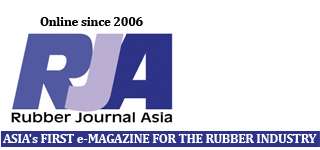PHILIPPINES – Rubber tree planting is now becoming popular in many provinces in Mindanao, particularly in the Central Mindanao region as evidenced by rows of rubber trees lining the roads of the areas.
It has been observed that the provinces in the central region concentrated in the planting of rubber trees based on the report of the United States Agency for International Development-Growth with Equity in Mindanao (USAID-GEM) Programme.
USAID-GEM reported that for the period 2005-2010, overall rubber production has increased by about 25% in Mindanao, and went up by 50% in the Central Mindanao sub-region.
In order to obtain good production of rubber in North Cotabato, the University of Southern Mindanao recently partnered with the USAID to provide training on rubber tapping and bark management for the farmers in Aleosan town, and in the neighboring municipalities of Libungan and Matalam.
The training, which was implemented through the USAID-GEM Programme, is part of USAIDs larger efforts to improve the competitiveness of growers across conflict-affected areas in Mindanao, and to enable former combatants of the Moro National Liberation Front (MNLF) to diversify into high-value agriculture production like rubber tree plantation.
USAID reported that in New Panay, Aleosan, the trees, some of them over 60 years old, have witnessed the transformation of this once conflict-affected region into an emerging rubber production hub.
New Panay village chieftain Lolita Caputolan said “people started planting rubber here as early as the 1950s. Aleosan’s hilly terrain and agro-climatic conditions make it a good location for rubber plantations.”
It was learned that Caputolan’s father had just started the family’s rubber farm in the 1970s when armed hostilities broke out between two local ethnic groups.
“We had to flee to evacuation centers in Libungan and Midsayap. More than once, we had to stay away for two to three years from our village but every time we returned home, we found our rubber trees in relatively good condition,” she recounted.
“That’s the thing about rubber trees. They are resilient and need minimal care, unlike other crops,” Caputolan said.
As local economy and security conditions in the area improved over the years, residents focused more on developing their farms – and on realizing income from rubber production.
“Domestic demand for rubber continues to grow,” said Caputolan, a member and business adviser of the New Panay Farmers Multi-Purpose Cooperative, whose 40 members include former combatants of the MNLF.
According to government data, aggregate rubber production in the Philippines amounted to more than 395,000 metric tonnes in 2010, with production concentrated in Central and Western Mindanao, particularly in the provinces of North Cotabato, Basilan, and Zamboanga Sibugay.
Caputolan said the training provided farmers with improved techniques in rubber tapping, including the proper angling and thickness of the cut.
Source: Manila Bulletin
